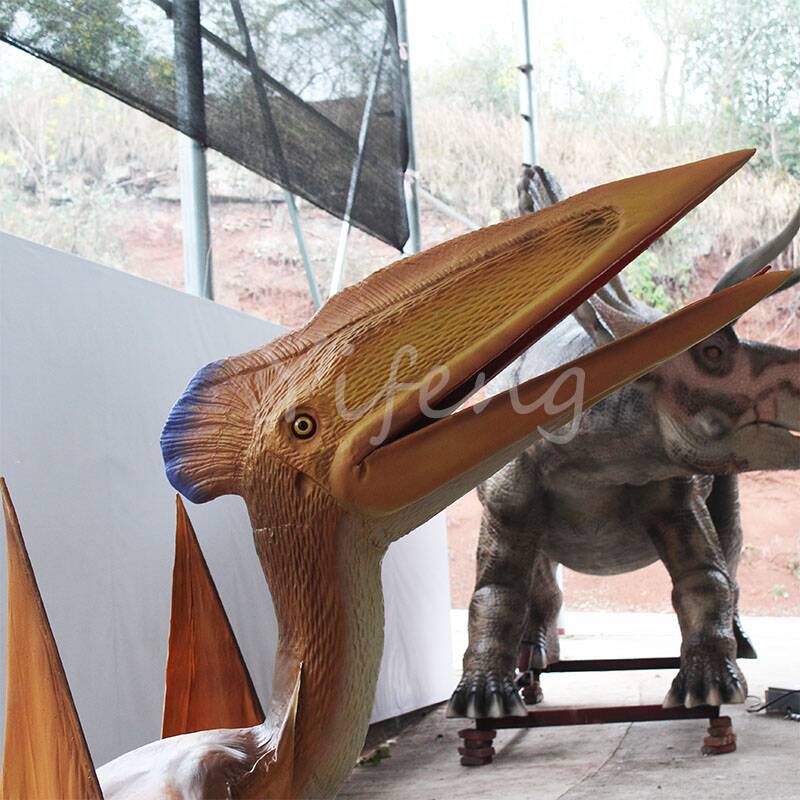The Fascinating World of Animatronic Dinosaurs: Bringing Prehistoric Creatures to Life
**The Fascinating World of Animatronic Dinosaurs: Bringing Prehistoric Creatures to Life**

In the realm of entertainment, education, and technology, animatronic dinosaurs have emerged as a captivating fusion of science and art. These lifelike robotic creatures, designed to mimic the appearance and behavior of prehistoric dinosaurs, have become a popular attraction in museums, theme parks, and even movies. But what exactly are animatronic dinosaurs, and how do they work? Let’s dive into the fascinating world of these mechanical marvels.
### What Are Animatronic Dinosaurs?

Animatronic dinosaurs are robotic replicas of dinosaurs that use a combination of mechanics, electronics, and software to simulate movement, sound, and even breathing. These creations are designed to look and act as realistically as possible, often featuring detailed skin textures, vibrant colors, and lifelike movements. From the towering Tyrannosaurus rex to the gentle Brachiosaurus, animatronic dinosaurs come in all shapes and sizes, each meticulously crafted to reflect the latest scientific understanding of these ancient creatures.
### How Are They Made?
Creating an animatronic dinosaur is a complex process that involves multiple disciplines, including paleontology, engineering, and artistry. Here’s a breakdown of the key steps:
1. **Research and Design**: The process begins with extensive research into the dinosaur’s anatomy, behavior, and habitat. Paleontologists and designers collaborate to ensure the animatronic model is scientifically accurate.
2. **Sculpting and Molding**: Artists sculpt a detailed model of the dinosaur, often using clay or foam. This model is then used to create molds for the dinosaur’s skin, which is typically made from silicone or latex to achieve a realistic texture.
3. **Mechanical Framework**: Inside the dinosaur, a metal skeleton or frame is built to support the structure. This framework includes motors, hydraulics, and pneumatic systems that enable movement.
4. **Electronics and Programming**: The dinosaur’s movements are controlled by a combination of sensors, microcontrollers, and software. Engineers program the dinosaur to perform specific actions, such as roaring, blinking, or walking.
5. **Assembly and Testing**: Once all the components are ready, the dinosaur is assembled, and rigorous testing ensures that it moves and behaves as intended. Any adjustments are made to perfect the final product.
### Applications of Animatronic Dinosaurs
Animatronic dinosaurs have a wide range of applications, making them a versatile tool for both education and entertainment:
1. **Museums and Exhibitions**: Many natural history museums use animatronic dinosaurs to create immersive exhibits that transport visitors back to the Mesozoic Era. These exhibits often include interactive elements, such as touch screens or fossil displays, to enhance the learning experience.
2. **Theme Parks**: Theme parks like Jurassic Park at Universal Studios feature animatronic dinosaurs as part of their rides and attractions. These lifelike creatures add an element of excitement and realism to the park experience.
3. **Movies and Television**: Animatronic dinosaurs have been used in films such as *Jurassic Park* and *Walking with Dinosaurs* to create realistic and awe-inspiring scenes. While CGI has become more preva1ent, animatronics are still valued for their tangible presence and ability to interact with actors.
4. **Educational Programs**: Schools and educational organizations use animatronic dinosaurs to teach students about paleontology, biology, and earth sciences. These interactive tools make learning fun and engaging.
5. **Events and Entertainment**: Animatronic dinosaurs are also popular at events such as fairs, corporate functions, and even birthday parties. They provide a unique and memorable experience for attendees of all ages.
### The Future of Animatronic Dinosaurs
As technology continues to advance, the possibilities for animatronic dinosaurs are virtually limitless. Innovations in artificial intelligence, robotics, and materials science are paving the way for even more realistic and interactive creations. For example, future animatronic dinosaurs may be able to respond to their environment in real-time, recognize and interact with visitors, or even “learn” from their experiences.
Moreover, the integration of virtual reality (VR) and augmented reality (AR) with animatronic dinosaurs could create entirely new ways to experience these prehistoric creatures. Imagine walking through a virtual Jurassic forest, where animatronic dinosaurs roam freely, and VR headsets provide additional layers of immersion.
### Conclusion
Animatronic dinosaurs are a testament to human ingenuity and our enduring fascination with the ancient past. By blending art, science, and technology, these incredible creations bring dinosaurs to life in ways that captivate and educate audiences around the world. Whether in a museum, a theme park, or a movie, animatronic dinosaurs continue to inspire awe and wonder, reminding us of the incredible creatures that once ruled our planet. As technology evolves, so too will our ability to recreate and interact with these magnificent beasts, ensuring that the legacy of the dinosaurs lives on for generations to come.

